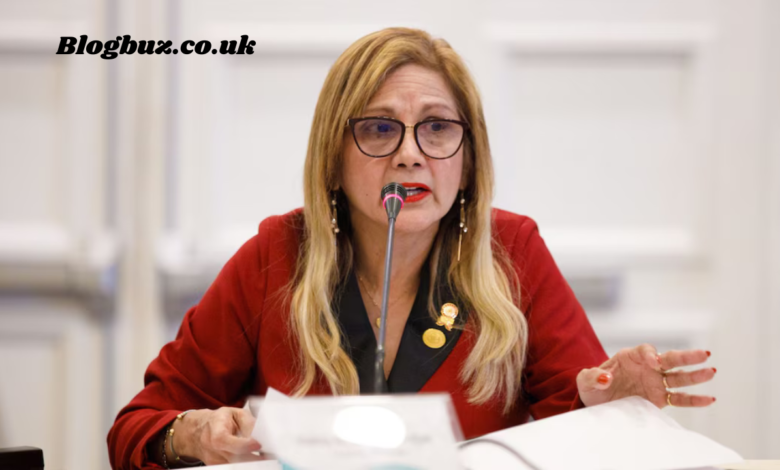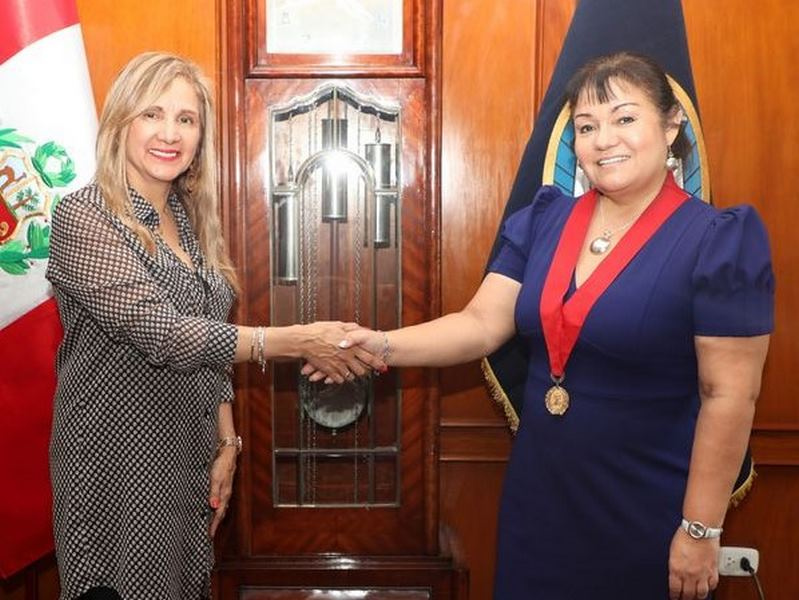Nancy Chiabra Alcaldesa de Bellavista Ano 1986: A Legacy of Community Transformation

Nancy Chiabra‘s tenure as the mayor of Bellavista, a culturally rich and economically challenged town, left a transformative impact that resonated throughout the community. As one of the pioneering female mayors in Peru, Chiabra’s leadership in 1986 was driven by a commitment to economic revitalization, social equity, and infrastructural modernization. This article delves into her life, achievements, challenges, and lasting legacy, offering an in-depth view of her influence on Bellavista and beyond.
Early Life and Inspiration
Nancy Chiabra’s upbringing in Bellavista shaped her passion for public service. Growing up in a family deeply involved in local community projects, Chiabra developed values of compassion, empathy, and a solid commitment to social responsibility. Her early career in social work enabled her to observe the socioeconomic challenges faced by her community closely, fostering a desire to address these issues on a larger scale.
Political Context of Bellavista in 1986

During the mid-1980s, Bellavista was grappling with several challenges. Financial difficulties, elevated rates of joblessness, and restricted availability of public services were daily realities for its residents. Bellavista’s infrastructure was also deteriorating, with poorly maintained roads and inadequate water and sanitation systems. In this backdrop, Chiabra’s political entry represented a fresh, hopeful perspective for a community seeking transformative leadership.
Chiabra’s Campaign and Vision
Nancy Chiabra’s campaign to become mayor was built on grassroots efforts, engaging directly with residents through town hall meetings and public forums. Her strategy was simple: involve the people in shaping the future of their community. Her slogan promised transparency, accountability, and community engagement, which resonated with Bellavista’s residents, who were eager for a leader who would listen and act on their needs.
Her campaign also broke social norms, as the political scene in Bellavista had been largely male-dominated. Many were initially sceptical about a female leader, yet Chiabra’s dedication and resilience won her supporters, particularly among women and young voters inspired by her vision for the town.
Key Initiatives and Achievements as Mayor
Once elected, Chiabra spent little time addressing the pressing issues in Bellavista. Her administration was characterized by strategic planning and community-driven policies. Here are some of the most notable achievements of her tenure:
Economic Revitalization
One of Chiabra’s primary goals was to strengthen Bellavista’s struggling economy, especially for small-scale farmers and local businesses. Recognizing the importance of agricultural stability, she worked closely with farmers and cooperatives, establishing partnerships that enabled Bellavista’s produce to reach broader markets. She also introduced microloans and eased bureaucratic restrictions, allowing small businesses to thrive. This focus on economic self-sufficiency helped stabilize the local economy and reduced emigration from Bellavista.
Social Welfare Reforms
Chiabra’s tenure was also marked by significant strides in social welfare. With healthcare and education among her priorities, she oversaw the establishment of new healthcare centres, expanded existing facilities, and introduced scholarship programs to support underprivileged children. This dual focus improved access to essential services for many residents and addressed longstanding inequalities in healthcare and education in Bellavista.
Furthermore, she worked to improve school infrastructure, which led to higher enrollment and attendance rates. Chiabra’s commitment to social welfare highlighted her holistic approach, aiming to address immediate needs and create long-lasting social changes.
Infrastructure Development
Infrastructure was a focal point of Chiabra’s administration. Bellavista’s infrastructure had been neglected for years, impacting quality of life and economic growth. Under her leadership, critical road repairs were conducted, and new public transportation routes were introduced to improve residents’ mobility. She also focused on upgrading the town’s water and sanitation systems, improving public health conditions, and contributing to a more livable community. These projects helped attract investments and revitalized Bellavista’s appeal as a place to live and work.
Community Engagement and Grassroots Governance
One of Chiabra’s most significant contributions was her emphasis on community engagement. She held regular public meetings, where residents were encouraged to share their concerns and ideas. His strategy promoted collective ownership and allowed for real-time feedback, which Chiabra used to shape policies more accurately. This participatory style of governance helped bridge the gap between the administration and citizens, fostering trust and transparency that strengthened her leadership.
Challenges and Obstacles
Despite her achievements, Chiabra’s tenure was not without challenges. She faced opposition from sceptics within Bellavista’s political landscape, some of whom doubted her policies and leadership skills because of her lack of traditional political experience. Financial constraints also limited the scope of some of her initiatives, forcing her to prioritize projects carefully and seek partnerships for additional funding.
In response to these challenges, Chiabra remained steadfast in her commitment to transparency. Her administration was known for its open financial reporting and frequent updates on project progress. This emphasis on accountability allowed her to navigate political and economic difficulties while maintaining public support.
Long-Term Impact and Legacy
Nancy Chiabra’s time as mayor left a lasting legacy in Bellavista. The infrastructural improvements she initiated laid the groundwork for continued development, and her established social programs continue to serve the community today. Her focus on educational and healthcare reforms created a generational impact, enabling many beneficiaries to contribute positively to the community’s future.
Furthermore, Chiabra’s leadership inspires future leaders in Bellavista and other towns. Her tenure demonstrated that community engagement and transparency are essential to effective governance, especially in areas with limited resources. She remains a symbol of resilience and transformative leadership, particularly for women who aspire to participate in politics and change their neighbourhoods.
The Legacy of Female Leadership in Bellavista

Nancy Chiabra’s journey and accomplishments have had a broader impact on female representation in local politics. As one of the first women to hold a mayoral position in the region, her success paved the way for future female leaders, challenging gender biases and inspiring a new generation of women to consider careers in public service. Her story exemplifies the importance of representation in government and the unique perspectives female leaders bring.
The cultural significance of her achievements cannot be understated. She has become a role model for community-driven activism and has inspired residents to take an active role in the development of Bellavista. Her leadership style centred on inclusivity and active listening, has set a new standard for political leaders, highlighting the benefits of grassroots governance.
Conclusion: Nancy Chiabra’s Enduring Influence
Nancy Chiabra’s role as mayor of Bellavista in 1986 remains a powerful example of transformative, community-centred leadership. Her focus on economic revitalization, social welfare, and infrastructure and their involvement in the community made a lasting impression on the town, establishing a foundation for sustainable development that continues to benefit its residents. Chiabra’s story is a narrative of political achievement and a testament to the impact of compassionate and transparent leadership, even in small communities with limited resources.
Frequently Asked Questions (FAQs) Nancy Chiabra Alcaldesa de Bellavista Ano 1986
Who is Nancy Chiabra?
Nancy Chiabra, who held office in 1986, is a former mayor of Bellavista, Peru. She is known for her impactful leadership, which focused on economic revitalization, social reform, and infrastructure improvements in her community. Her tenure marked a progressive shift in local governance, especially as one of the first female mayors in the region.
What challenges did Nancy Chiabra face during her time as mayor?
Chiabra faced several challenges, including financial constraints that limited resources for her initiatives. She also dealt with political opposition, as some traditional political factions were sceptical of her policies and leadership capabilities due to her lack of formal political experience and her gender, which was uncommon in leadership roles at the time.
How did Chiabra support economic revitalization in Bellavista?
Chiabra implemented several economic policies to support local agriculture and small businesses. By collaborating with local cooperatives, she helped farmers gain market access, stabilized crop prices, and introduced microloans to ease the bureaucratic processes for small businesses. This encouraged local entrepreneurship and reduced economic migration from Bellavista.
How did her tenure influence female representation in politics?
Chiabra’s role as one of the first female mayors in the region inspired future generations of women to consider careers in public service, challenging gender biases in local politics. Her success demonstrated that women could lead effectively and make a positive difference, influencing community attitudes and future political candidates.
What were her initiatives in social welfare and healthcare?
Chiabra’s administration expanded healthcare services, establishing new healthcare centres and improving existing ones to enhance accessibility. She also implemented scholarship programs for underprivileged children and upgraded school facilities to improve educational outcomes, directly addressing social inequalities in Bellavista.
You May Also Read: The Long-term Impact of RSS Letter No 0876 on Indian Policies




